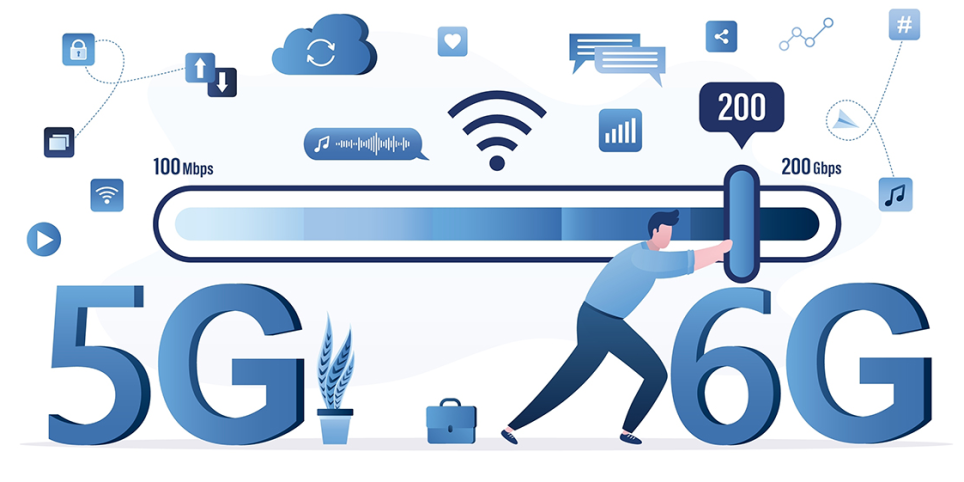
Understanding the Shift to 6G: What the Future of Mobile Connectivity Holds
6G Mobile Connectivity Tech Trends Future of Telecom Wireless Technology Telecommunications IoT High-Speed Internet
Understanding the Shift to 6G: What the Future of Mobile Connectivity Holds
While the world is still adjusting to the deployment of 5G networks, the race towards the next generation of mobile connectivity, 6G, is already underway. Promising even faster speeds, ultra-low latency, and revolutionary applications in industries ranging from healthcare to entertainment, 6G is poised to transform the way we connect and interact with the digital world. In this post, we’ll explore what 6G is, how it differs from 5G, and the potential impact it will have on society.
What is 6G?
6G refers to the sixth generation of wireless mobile communications, which is expected to succeed 5G by the end of this decade. While 5G is focused on enhancing mobile broadband, enabling faster data speeds, and supporting more connected devices, 6G aims to push these boundaries even further. It is predicted that 6G will provide data speeds up to 100 times faster than 5G, with latency as low as 1 millisecond, offering near-instantaneous communication.
How Will 6G Differ from 5G?
The jump from 5G to 6G is expected to bring several significant advancements in connectivity:
1. Unprecedented Speed and Bandwidth
6G is anticipated to offer data transfer speeds of up to 1 terabit per second (Tbps), which is 100 times faster than the top speeds of 5G. This massive increase in speed will enable technologies that require real-time data processing, such as advanced AI applications, immersive virtual and augmented reality (VR/AR), and autonomous systems.
2. Ultra-Low Latency
With latency expected to drop to as low as 1 millisecond, 6G will enable seamless real-time communication, making technologies such as remote surgery, autonomous vehicles, and immersive gaming more responsive and reliable. The reduction in latency will be particularly important for industries that rely on immediate feedback and critical data.
3. Integration of AI and Edge Computing
6G will be more deeply integrated with artificial intelligence (AI) and edge computing, allowing devices to process data closer to the source. This will enable faster decision-making and improve the efficiency of applications that require large-scale data processing, such as smart cities, IoT networks, and automated manufacturing systems.
4. Enhanced Spectrum Utilization
6G will utilize higher frequency bands, including terahertz (THz) frequencies, to accommodate the demand for greater bandwidth. These higher frequencies will allow for more data to be transmitted, but will require advanced technologies to overcome challenges such as shorter signal ranges and potential interference.
Applications and Impact of 6G
6G technology has the potential to unlock new possibilities across multiple industries, driving innovation and transforming how we live, work, and communicate. Some of the key applications of 6G include:
1. Immersive Virtual and Augmented Reality
With the ultra-high speeds and low latency of 6G, immersive technologies like virtual reality (VR) and augmented reality (AR) will reach new heights. 6G will enable seamless, real-time experiences, allowing users to fully immerse themselves in digital environments for gaming, education, remote work, and entertainment.
2. Autonomous Systems and Vehicles
The reliability and speed of 6G will enable the safe and efficient operation of autonomous vehicles, drones, and robotic systems. These systems will be able to communicate and make decisions in real-time, opening up new possibilities in transportation, logistics, and manufacturing.
3. Smart Cities and IoT
6G will accelerate the development of smart cities, where connected devices and sensors work together to manage resources, monitor infrastructure, and improve quality of life. IoT networks will become more efficient and scalable, allowing for real-time data processing and optimization of urban systems such as energy grids, traffic management, and public safety.
4. Healthcare and Remote Surgery
The low latency and reliability of 6G will make remote surgeries and telemedicine more feasible, enabling healthcare providers to perform complex procedures from anywhere in the world. This will improve access to medical care, particularly in remote or underserved areas.
5. AI-Powered Applications
6G will enhance the capabilities of AI-powered applications, enabling real-time data analysis and decision-making at the edge. This will lead to advancements in fields like predictive maintenance, personalized healthcare, and intelligent automation in industries ranging from manufacturing to finance.
Challenges in Implementing 6G
While the potential of 6G is immense, several challenges need to be addressed before it becomes a reality:
- Infrastructure Development: 6G will require a massive overhaul of existing telecommunications infrastructure, including the deployment of new cell towers, satellites, and fiber optic networks.
- Power Consumption: With faster speeds and higher bandwidth, 6G networks could lead to increased power consumption, requiring new solutions for energy-efficient operation.
- Regulation and Spectrum Allocation: The use of higher frequency bands, including terahertz frequencies, will require careful regulation and allocation of spectrum to ensure efficient and interference-free communication.
The Road to 6G: When Will It Arrive?
While 6G is still in the research and development phase, industry experts predict that we could see early deployments by the 2030s. Leading telecom companies, research institutions, and governments are already working together to establish standards, develop infrastructure, and explore potential use cases. The transition from 5G to 6G will likely be gradual, with advancements in AI, machine learning, and quantum computing playing key roles in shaping the future of 6G networks.
Conclusion
6G represents the next frontier in mobile connectivity, offering unparalleled speed, low latency, and transformative applications across industries. As research and development efforts continue, 6G has the potential to reshape the way we interact with technology, creating new opportunities for innovation and growth. While we may be several years away from widespread 6G adoption, its impact on industries such as healthcare, transportation, and entertainment will be profound, ushering in a new era of connectivity and digital transformation.
Thank you for reading, and stay tuned for more insights and tips as we continue our tech journey together!